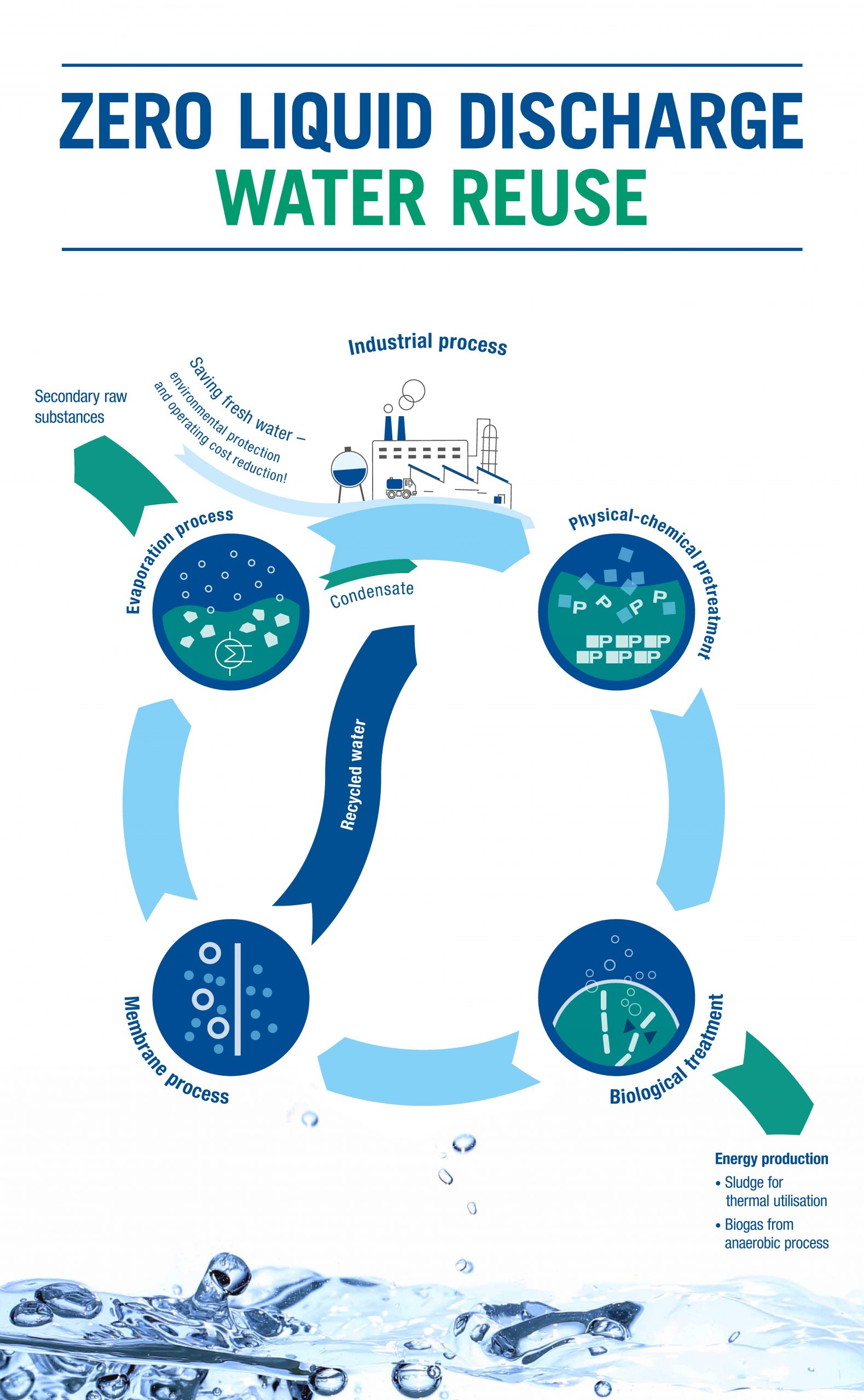ZERO LIQUID DISCHARGE IN INDUSTRIAL PROCESSES
Water is an indispensable raw material in practically all industrial processes. Water treatment therefore plays an important role in industry. The aim is always to achieve economical and resource-saving treatment, optimized for the respective application.
In a ZLD treatment process, wastewater is treated in such a way that this treatment produces purified water and a sludge that is suitable for landfill. Ideally, the water is treated in such a way that it can be reused as process water. In addition to environmental aspects, economic and occasionally also legal aspects are decisive for the choice of process. ZLD processes are characterized by the fact that the final process stage is usually carried out using an energy-intensive thermal process.
ADVANTAGES OF THE ZLD TREATMENT PROCESS APPLICATION
The aims are to reduce the volume of wastewater produced, reduce the loads in the residual wastewater and/or recover valuable materials. The ideal approach is a holistic one, which involves reducing and optimizing the additional water required for the process on the one hand and reducing and reusing the wastewater produced on the other.
THE PROCESSES USED IN THE ZLD TREATMENT PROCESS
Different processes are used here. Chemical-physical wastewater treatment is often carried out first to separate poorly soluble and insoluble substances. If necessary, this is followed by biological wastewater treatment to break down organic impurities. Depending on the type of organic substances, chemical-oxidative treatment can also be carried out. The result of these treatment stages is usually a wastewater that fulfills the discharge criteria for discharge into a wastewater network.
